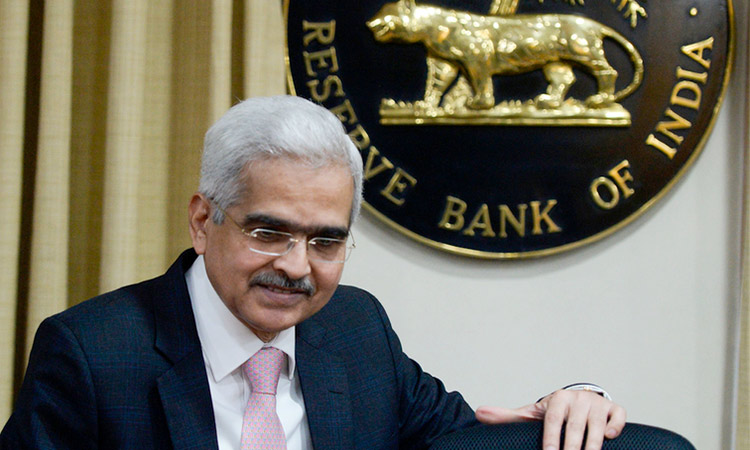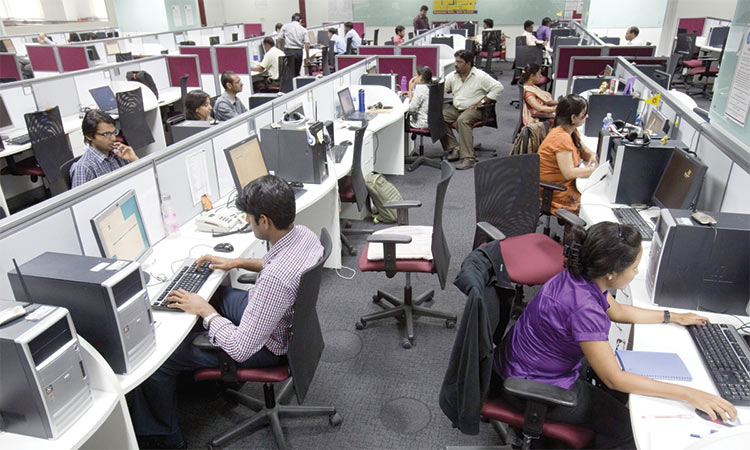India’s GDP projected to rise sharply to 7.1 per cent during 2021 fiscal

A vendor sorts tomatoes as he waits for customers at a vegetable market in Mumbai, India. Reuters
On the impact of lowered corporate tax for existing companies to 22 per cent from 30 per cent, and for new manufacturing companies to 15 per cent from 25 per cent, Bloomberg Economics noted that this can attract FDI at the time of trade wars.
“This is likely to boost private investment and has the potential to attract greater foreign investment over the next few years, just as the US-China trade war is prompting global manufacturers to rethink their supply chains,” it said.
Bloomberg Economics said in a special report on global outlook called “2020 Vision-Forecasts for the Year Ahead” that the sharp rise in GDP would herald a genuine economic recovery in India in 2020 with the revival of consumer and investor sentiment.
According to the report, India’s recovery, which has been a long time coming, finally seems to be around the corner.
By next year, rural incomes should rise, the central bank’s rate cuts are expected to lead to lower lending rates, and post-tax corporate profits are likely to be higher. “Combined, these should revive consumer and investor sentiment,” the report said.
The turnaround is likely to show up beginning in the October-December quarter, though largely because of a low base in the year-earlier period. A genuine recovery should start in 2020, the report noted.
“We expect gross domestic product growth to rise sharply in fiscal 2021 ending March, to 7.1 per cent from an estimated 5.7 per cent in fiscal 2020. On a quarterly basis, we expect growth to remain flat at 5 per cent in the second quarter of fiscal 2021 ending September, recover to 6 per cent in the third quarter, and rise to 6.8 per cent in the fourth quarter ending March 2021,” Bloomberg Economics has projected.
Good rainfall and government income support is expected to boost farmers’ income and drive rural consumption. The Reserve Bank of India’s liquidity support and rate cuts have started to bring down borrowing rates for home loans and personal consumer loans. These should support overall consumption. Deep cuts in corporate tax rates are also likely to add impetus to the recovery, reviving animal spirits among businesses and shareholders and, over the medium term, attracting more investment, the report said.
According to the report, several other factors also bode well for the outlook. The government’s decision to infuse capital into public sector banks and the central bank’s measures to revive non-deposit-taking financial companies should help strengthen the financial system. The RBI’s transfer of surplus capital reserves to the government also creates more leeway to increase fiscal spending.
Meanwhile the Asian Development Bank (ADB) has revised the estimate for India’s growth rate in the financial year 2019-2020 downwards to 5.1 per cent from the previous forecast of 6.5 per cent. Further, it has also cut the estimate for the next fiscal, FY 2020-21 to 6.5 per cent from 7.2 per cent.
“In India growth has slowed substantially as a result of a credit crunch and weakening domestic demand,” said a statement by ADB. This is another addition to the series of downward revision of India’s economic forecast for the ongoing fiscal.
The Reserve Bank of India (RBI) in its monetary policy announcement last week revised its FY2019-20 outlook to 5 per cent from 6.1 per cent.
The central bank said that the July-September GDP growth had turned out to be significantly lower than projected and various high frequency indicators suggest that domestic and external demand conditions have remained weak.
The growth rate for the second quarter slumped to a 6-year low of 4.5 per cent. The RBI’s Flexible inflation targeting framework will be reviewed only after March 2021, its Executive Director Micheal Patra has told analysts.
Flexible inflation targeting is a monetary policy strategy used by the Central bank to maintain the price level within a certain range. This strategy indicates the importance of price stability as the prime factor of monetary policy.
Inflation targeting is known to bring more stability, predictability, and transparency in deciding monetary policy. This is because of the argument that rising prices create uncertainties and adversely affect savings and investments.
A pact was signed by then Finance Secretary Rajiv Mehrishi and then RBI Governor Raghuram Rajan, saying the primary target of monetary policy would be to achieve price stability, while keeping in mind the growth objective.
Indo-Asian News Service







